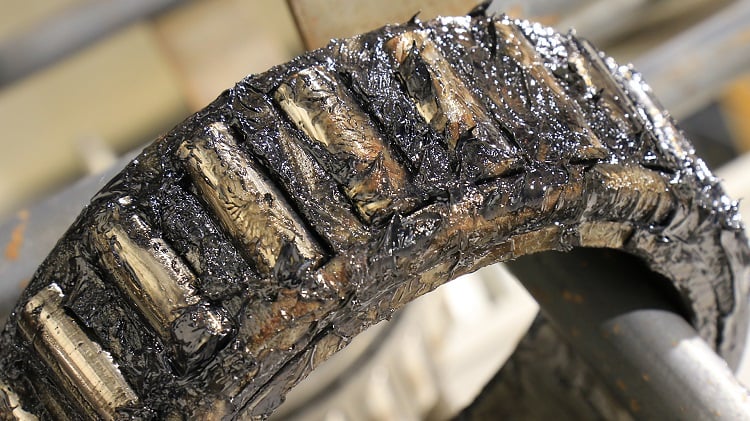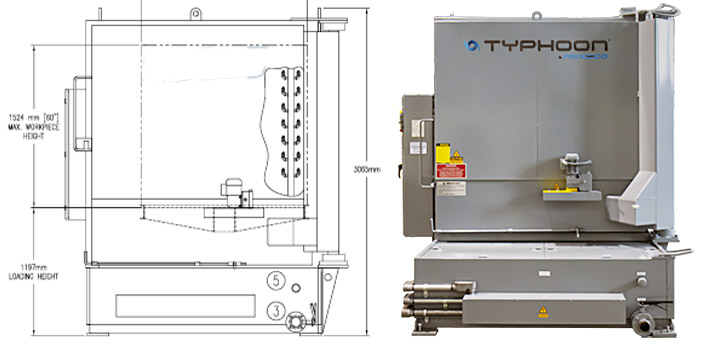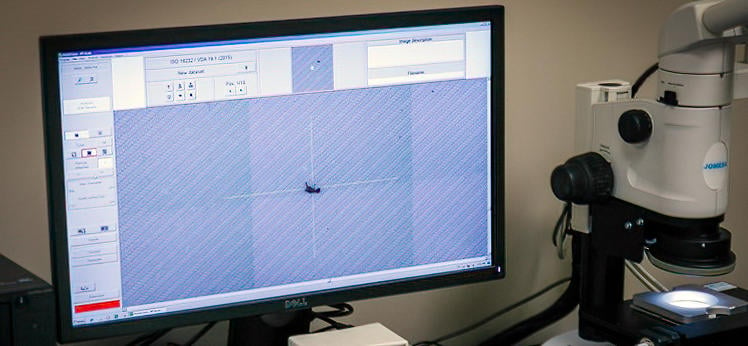THE IMPORTANCE OF WELL-MAINTAINED PUMPS
A pump is the heart of a parts washer and, like the human heart, needs to be kept healthy. If you carry out the simple maintenance tasks that keep your pump running smoothly, you can enjoy many years of trouble-free cleaning performance from your washer.
However, if you don't perform periodic preventive maintenance, your pump will fail prematurely, and that will cost you money! For industrial operations with a high production rate, the downtime required to carry out repairs or pump replacement can get very expensive.
Fortunately, pump maintenance doesn't have to be difficult or complicated. It all starts with a preventive maintenance plan. If you have a simple, effective maintenance plan, you can generally keep your pump running for years without significant problems or excessive downtime.
A preventive maintenance plan consists of two elements: the maintenance tasks and their frequency. If you carry out the tasks at the correct frequency, your pumps can provide years of trouble-free service. It's really that simple.
Each PROCECO washer's manual comes with a detailed preventive maintenance schedule developed for each of our models based on over 45 years of experience in manufacturing parts washers.
In addition to preventive maintenance, you can keep your pump running smoothly by correctly diagnosing problems that may occur, as well as maintaining an inventory of critical spare parts.
COMMON CAUSES OF PUMP FAILURE
The most common pump failure our customer support department encounters is lack of proper bearing lubrication. There are several aspects to keep in mind.
- Lubrication frequency is essential to ensure the quality of the grease in the pump. Through time, the grease can be expelled or simply migrate away from the bearings, and the effectiveness of grease diminishes, so you should always follow the recommended maintenance plan by carrying out regreasing at the recommended intervals. Since many operations run equipment 24/7, it's best to measure pump usage in hours and not just calendar units.
- Too much grease (over greasing) will cause the rotating bearing elements to begin churning the grease, pushing it out of the way, resulting in energy loss and rising temperatures; leading to rapid oxidation (chemical degradation) of the grease.
- It's important to use the correct grease for the application. For example, PROCECO recommends one type of grease for pump shaft bearings and another for pump motors. Each is selected for properties that best fit the application and manufacturer's recommendations.
- It's important to keep the pump and equipment as clean as possible to reduce contaminants that may infiltrate the bearings and cause premature wear. When greasing using a zerk, make sure the zerk and the grease gun nozzle are clean, and if possible, make sure the zerk is covered between greasings. Otherwise, you could be pumping dirt and contaminants straight into your bearings.
The second most common pump problem identified by our customer support department is abrasives in the solution, which can wear out impellers and related components.
- Filtration is vital to remove abrasives particles from the recirculating solution. Therefore, it's essential to maintain all filtration devices on your washer to ensure that each is performing its intended function. It's evident that clogged filters reduce performance, so keeping filtration elements clean or changing them regularly is essential. Likewise, you should never attempt to run a washer without the correct filter element installed, as doing so introduces abrasive particles into the recirculating flow that will cause severe damage!
- It's also a good idea to regularly monitor the quality of your solution. Over time, the wash solution will accumulate dirt and possibly abrasive particles that can enter the pump and lead to premature impeller wear.
IDENTIFYING REAL PUMP PROBLEMS
It's crucial to ensure that the problem you may be experiencing is genuinely due to inadequate or improper pump maintenance. There may be other causes for issues that are incorrectly diagnosed as pump problems. Ironically, if they're not resolved, some of these can lead to severe pump damage!
- The most common problem for a parts washer is worn or missing spray nozzles, which can cause a pump motor to overdraw current. When nozzles wear excessively, the solution flow increases, and so does the electrical current draw. Consequently, the pump motor overdraws current. This may lead to stopping production to verify pump operation, when in reality; a quick nozzle change is all that's required.
- Setting your operating temperature too high can also cause problems that are not related to pump maintenance. Generally, beyond 185˚F (85°C), the solution's vapor pressure approaches the suction pressure of the pump, which induces cavitation (boiling). Excessive cavitation will damage the pump.
- Foaming in a solution tank is another problem that occurs frequently. This can also lead to cavitation and is often a result of improper cleaner selection or lower than specified operating temperatures.
CHOOSING A WASHER SUPPLIER WITH PROVEN DESIGNS
PROCECO has been building industrial parts washers for over 45 years, with thousands of washers delivered to customers worldwide, so we know how vital a pump is to the cleaning process. In designing cleaning systems, our engineering department implements pump designs that will provide optimal performance and are also easy to maintain.
For example, sealless pumps reduce the possibility of leakage and damage to the pump from contaminants. Seals are prone to fail over time, especially in harsh conditions such as those encountered in parts washing. Additionally, worn seals provide easier access for air infiltration, which increases the speed of lubricant oxidation. Grease reacts with oxygen to produce sludge and deposits that promote premature wear and overheating. Increased temperature promotes even faster oxidation, and even carbonation as grease does not dissipate heat well.
PROCECO pumps can be lifted out of their solution tank vertically for ease of maintenance without tank draining. Maintaining pumps installed in washers manufactured by others often involves shutting down the washer, draining the solution tank to fully access the pump, performing the pump maintenance, and then refilling the tank. This whole process can take at least a full production shift or longer. With a PROCECO pump, in as little as 15-30 minutes, maintenance personnel can remove it from the tank without draining the solution. They can then perform the required maintenance and reinstall it to get the washer back into production as rapidly as possible.
Another advantage PROCECO offers is that many of our smaller pumps feature a sealed-for-life bearing design, eliminating problems due to possible lack of lubrication.
Finally, for cases where a pump overhaul is necessary, it's crucial to have the support you need. PROCECO provides complete pump overhaul instructions in our product manuals and 24/7 customer support via telephone or e-mail.
MAINTAINING A STOCK OF REPLACEMENT PARTS
Even with careful and consistent preventive maintenance, it's impossible to avoid the need for eventual pump repair and part replacement. To prevent expensive downtime, it's essential to keep spare parts in stock. PROCECO maintains a substantial inventory of standard replacement parts for our washers. The replacement parts list included in our product manuals identifies which components are critical to keep in stock at all times to get your pump up and running as quickly as possible, as well as parts that may not be critical but that PROCECO recommends you keep in stock.
CONCLUSION
Pump maintenance does not have to be a complicated or mysterious procedure. If you develop and follow a simple but effective preventive maintenance plan, correctly diagnose any problems that do occur, and maintain an inventory of critical spare parts, you can enjoy years of trouble-free service from your cleaning equipment.



